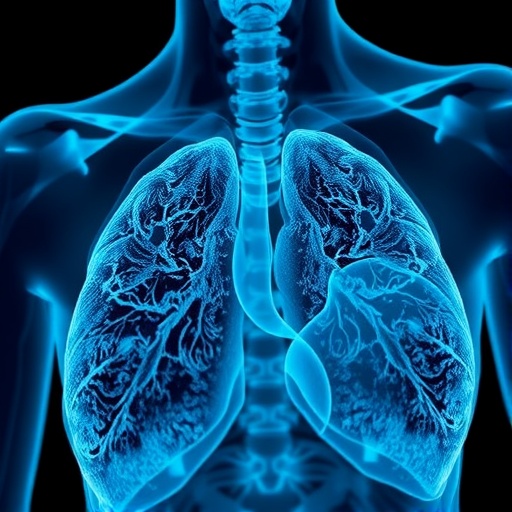In recent years, the field of oncology has witnessed a remarkable transformation driven by the convergence of nanotechnology and cancer therapeutics. Among the most pressing challenges in cancer treatment is breast cancer, which remains one of the leading causes of mortality worldwide. The latest correction to a pivotal study entitled “Emerging nanostructure-based strategies for breast cancer therapy: innovations, challenges, and future directions” underscores the rapid evolution and complexity of this domain. This research illuminates new pathways to enhance therapeutic efficacy while minimizing the systemic toxicity often associated with conventional treatments.
Breast cancer therapy has traditionally relied on a combination of surgery, radiation, chemotherapy, and hormonal treatments. However, these modalities frequently suffer from limitations such as non-specific targeting, adverse side effects, and eventual drug resistance. Nanostructure-based strategies have emerged as a promising avenue to circumvent these obstacles by exploiting the unique physicochemical properties of nanomaterials, enabling precise delivery of therapeutic agents directly to malignant cells. This approach offers a paradigm shift from broad-spectrum cytotoxicity to targeted and personalized medicine.
The core advantage of nanostructures lies in their ultrasmall size, typically ranging from 1 to 100 nanometers, and their ability to be engineered with specific surface chemistries. Such modifications permit functionalization with targeting ligands, antibodies, or peptides that recognize and bind to cancer cell biomarkers. This enhanced specificity not only increases drug accumulation within tumor tissues via enhanced permeability and retention (EPR) effects but also reduces off-target damage, preserving healthy tissues. Additionally, nanocarriers can be designed to release payloads in response to stimuli such as pH changes, temperature fluctuations, or enzymatic activity characteristic of the tumor microenvironment.
Among the most explored nanostructures are liposomes, dendrimers, polymeric nanoparticles, metallic nanostructures, and quantum dots. Liposomes, phospholipid-based vesicles capable of encapsulating both hydrophilic and lipophilic drugs, have undergone clinical success due to their biocompatibility and ability to evade immune clearance when appropriately PEGylated. Dendrimers, with their highly branched synthetic architecture, offer unparalleled control over size and surface functionality, facilitating multivalent interactions with cancer cells. Polymeric nanoparticles, often synthesized from biodegradable polymers like PLGA, provide sustained drug release profiles with low toxicity.
Recent advances in metallic nanostructures, including gold and silver nanoparticles, have opened new horizons for breast cancer therapy, particularly in photothermal and photodynamic modalities. These nanoparticles possess unique optical properties enabling them to convert absorbed light into heat, selectively ablating tumor tissues upon irradiation. Such therapies harness minimally invasive techniques, reducing collateral damage and improving patient recovery times. Moreover, when conjugated with chemotherapeutic agents, metallic nanoparticles can serve dual functions—enhancing therapeutic accumulation and enabling external control over drug activity.
The challenges confronted by nanostructure-based breast cancer therapies, however, are multifaceted. A primary concern is the heterogeneity of tumor physiology, which complicates uniform nanoparticle distribution and penetration within the tumor mass. The dense extracellular matrix and abnormal vasculature often restrict nanocarrier accessibility, necessitating the development of strategies to augment tumor penetration. Modulating nanoparticle size, shape, and surface charge plays a crucial role, but biological barriers such as the mononuclear phagocyte system (MPS) often clear nanoparticles before they reach their targets.
Immunogenicity and long-term toxicity remain significant hurdles. Although many nanomaterials exhibit biocompatibility, chronic exposure and accumulation in organs like the liver and spleen pose safety concerns. Detailed pharmacokinetic and pharmacodynamic studies are essential to elucidate biodistribution patterns and potential adverse effects. The inherent complexity and variability across patients call for personalized nanomedicine approaches, leveraging biomarker profiling to tailor nanotherapeutic designs.
Regulatory frameworks for nanomedicines are still evolving. Standardization of characterization methods, manufacturing reproducibility, and quality control are critical to ensure clinical translation and patient safety. Integration with advanced imaging techniques allows real-time monitoring of nanocarrier distribution and therapeutic outcomes, providing invaluable feedback for optimizing treatment regimens. Combining nanostructures with immunotherapy agents represents another frontier, aiming to potentiate the host immune response against breast cancer cells.
The future directions highlighted in this research emphasize a multidisciplinary approach, involving materials science, molecular biology, and clinical oncology. Innovations such as stimuli-responsive “smart” nanomaterials, multi-drug loaded platforms, and combination therapies integrating nanostructures with gene editing tools like CRISPR/Cas9 promise to redefine breast cancer management. Advances in computational modeling and machine learning can accelerate the design and screening of effective nanotherapeutic candidates. Furthermore, the development of universal docking strategies and modular platforms can facilitate rapid adaptation to emerging cancer subtypes.
In parallel, ethical considerations and equitable access to these advanced therapies must not be overlooked. The high costs associated with nanomedicine development may limit availability in low-resource settings, warranting policy initiatives to bridge disparities. Patient education and informed consent remain indispensable components as novel nanotherapies move from bench to bedside.
In conclusion, the dynamic intersection of nanotechnology and breast cancer treatment heralds a transformative era in oncology. By enabling targeted delivery, reducing systemic toxicity, and overcoming drug resistance mechanisms, nanostructure-based strategies hold immense promise to improve survival rates and quality of life for breast cancer patients globally. Continuous collaborative efforts spanning fundamental research, technological innovation, and clinical validation are imperative to translate these breakthroughs into routine clinical practice and ultimately conquer one of the most formidable health challenges of our time.
Subject of Research: Nanostructure-based strategies for breast cancer therapy, including innovations, challenges, and future directions.
Article Title: Correction to: Emerging nanostructure-based strategies for breast cancer therapy: innovations, challenges, and future directions.
Article References:
Hadri, S.H., Riaz, A., Abid, J. et al. Correction to: Emerging nanostructure-based strategies for breast cancer therapy: innovations, challenges, and future directions.
Med Oncol 42, 385 (2025). https://doi.org/10.1007/s12032-025-02876-1
Image Credits: AI Generated




